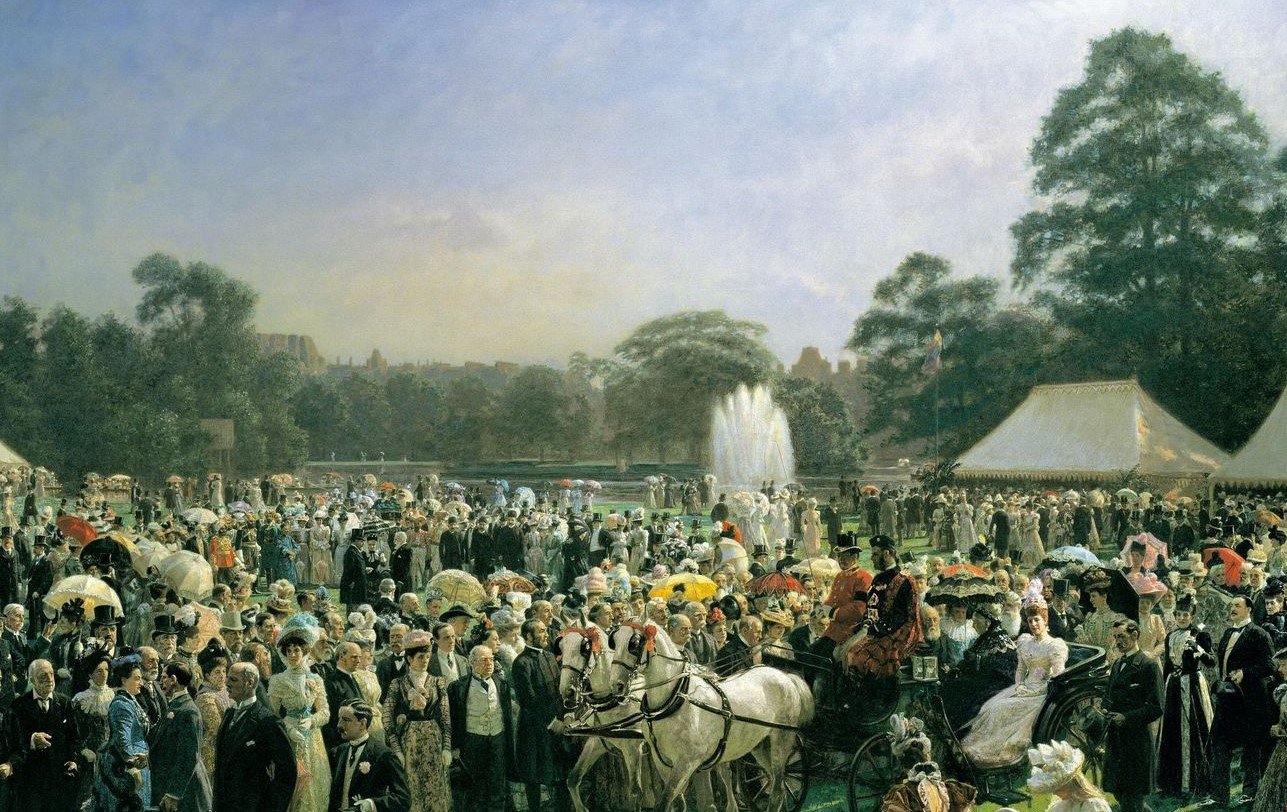
Royal Gardens
Depictions of the gardens at Windsor Castle and other royal residences
AFTER MATTHEW COTES WYATT (1777-1862)
A Jubilee at Frogmore
c.1809RCIN 700895
One of the chief attractions of Frogmore for the royal family was the 35-acre (14.2-hectare) garden, in which they could walk, read and entertain. This view is from the garden front of the house and shows the artificial lake created by 1796, and some of the newly planted shrubs and trees. However, the main part of the Frogmore grounds was to the right of this view, in the area later occupied by the mausolea of the Duchess of Kent, and of Prince Albert and Queen Victoria. The guiding spirit behind the landscaping undertaken for Queen Charlotte appears to have been Major William Price, the younger brother of Uvedale Price, the pioneer of the picturesque theory of gardening. The lake was the setting for many of the garden buildings erected - to the designs of James Wyatt, and of Princess Elizabeth - in the 1790s and 1800s.
Numerous fêtes or entertainments were held in the new gardens. The Jubilee fête in 1809, the subject of this print, was attended by nearly 1,200 people. There were fireworks and illuminations, an 'elegant supper' was offered to the guests, and an elaborate water pageant was staged on the lake, celebrating the triumph of Britannia. The temple on the island was a temporary structure, designed by Princess Elizabeth and executed by James Wyatt; it contained a portrait of the King, who was unable to attend the festivities owing to his increasing blindness and ill-health. In several respects the temple looks back to Robert Adam's designs for the illuminated screen in the garden of Buckingham House in 1763.
The water pageant was recorded by James Wyatt's son, Matthew Cotes Wyatt. He was employed in various projects at Windsor, including the painting of new ceilings in the State Apartments.
Catalogue entry adapted from George III & Queen Charlotte: Patronage, Collecting and Court Taste, London, 2004
Numerous fêtes or entertainments were held in the new gardens. The Jubilee fête in 1809, the subject of this print, was attended by nearly 1,200 people. There were fireworks and illuminations, an 'elegant supper' was offered to the guests, and an elaborate water pageant was staged on the lake, celebrating the triumph of Britannia. The temple on the island was a temporary structure, designed by Princess Elizabeth and executed by James Wyatt; it contained a portrait of the King, who was unable to attend the festivities owing to his increasing blindness and ill-health. In several respects the temple looks back to Robert Adam's designs for the illuminated screen in the garden of Buckingham House in 1763.
The water pageant was recorded by James Wyatt's son, Matthew Cotes Wyatt. He was employed in various projects at Windsor, including the painting of new ceilings in the State Apartments.
Catalogue entry adapted from George III & Queen Charlotte: Patronage, Collecting and Court Taste, London, 2004







